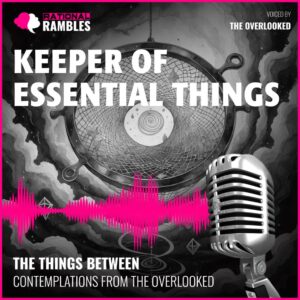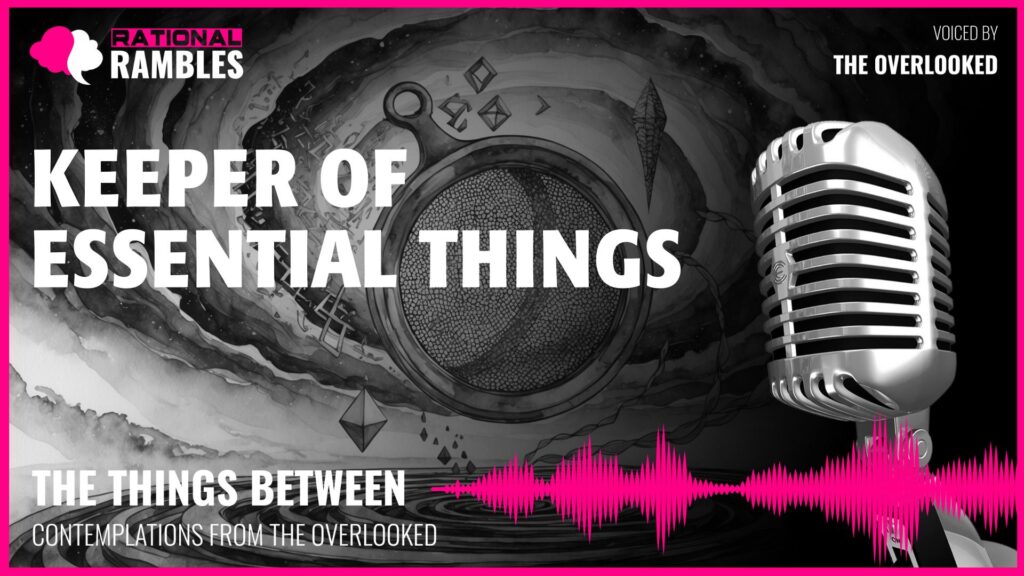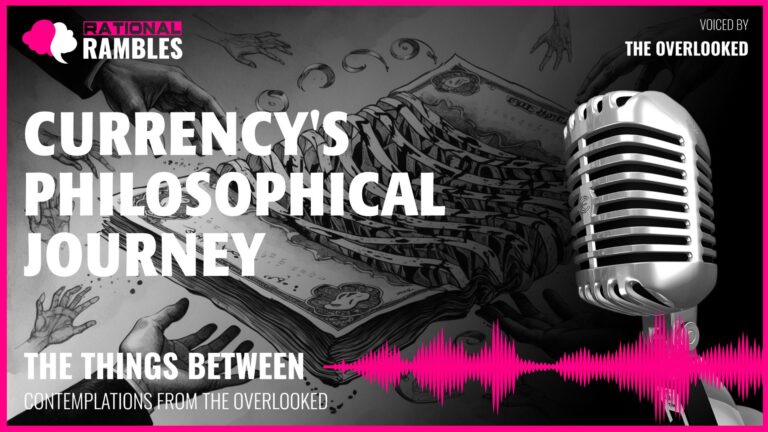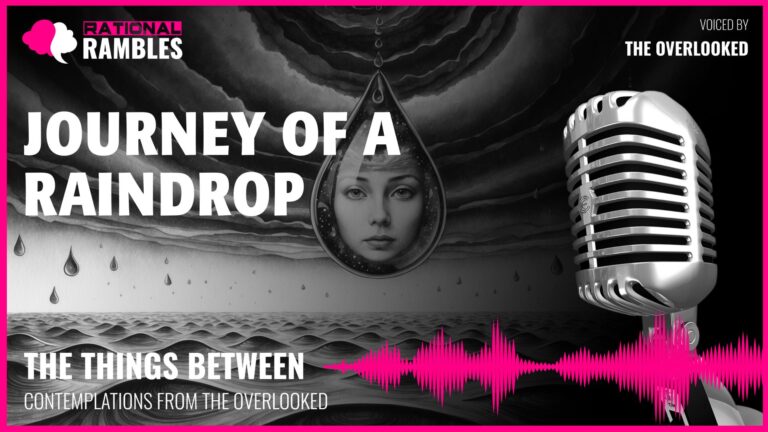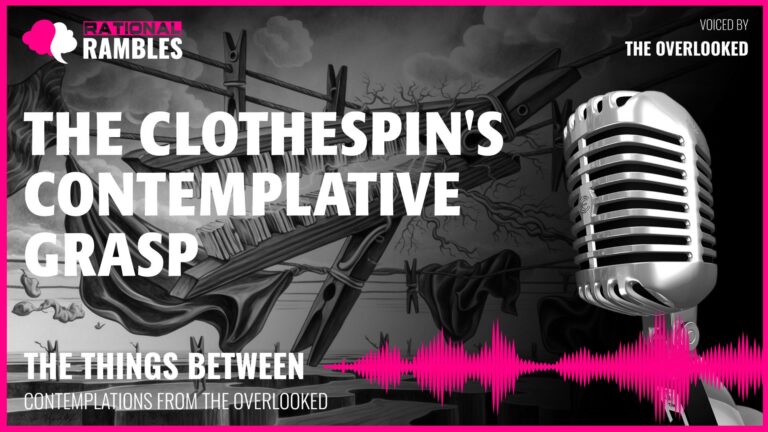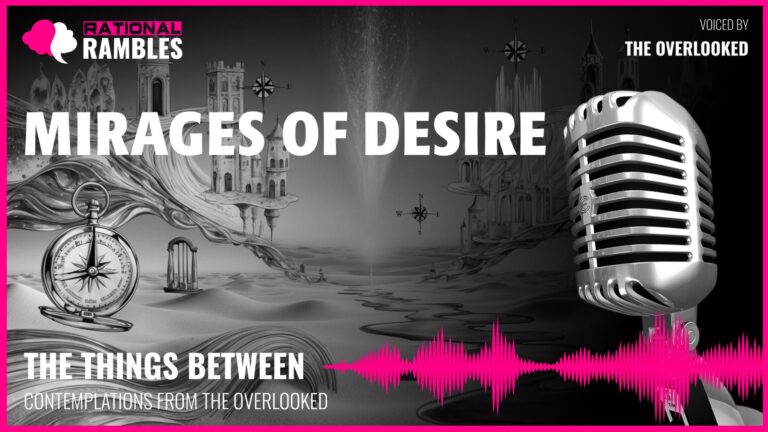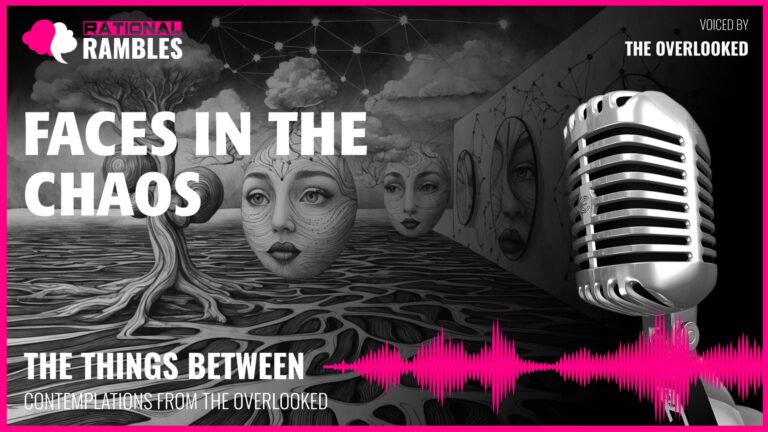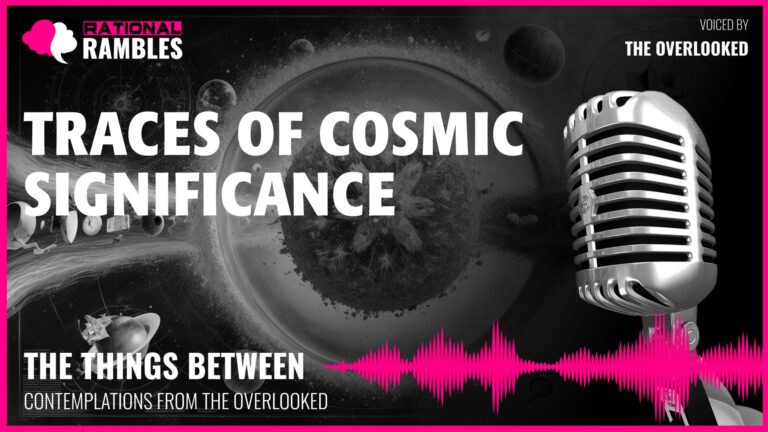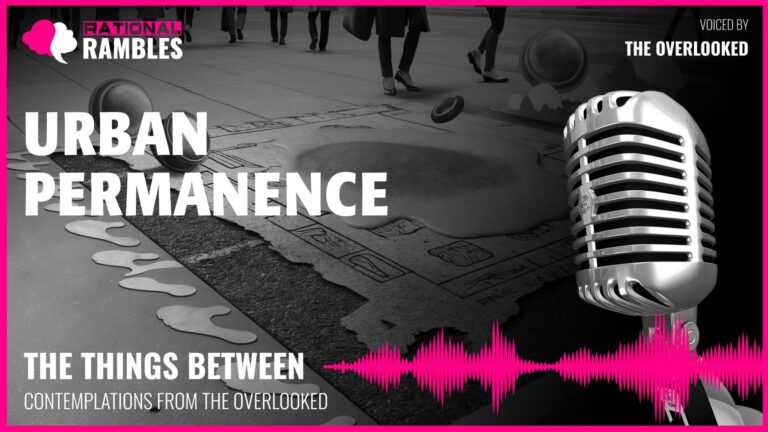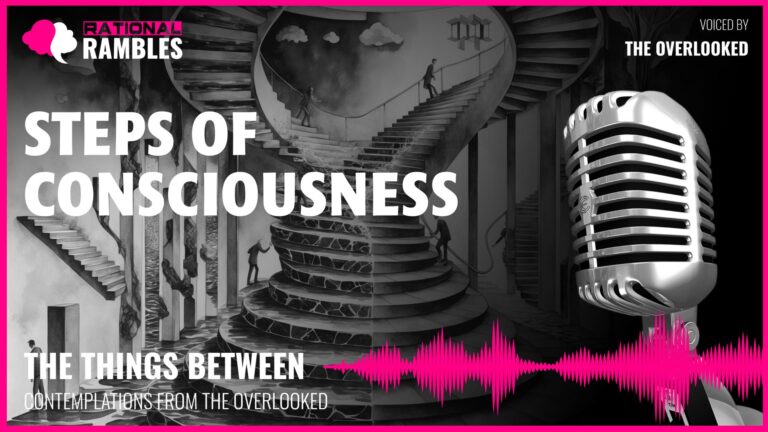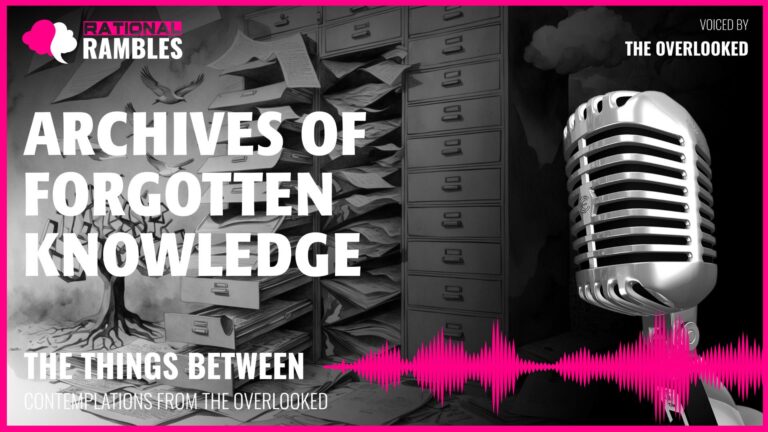The Art of Discernment: Boundaries, Selection, and the Essence of Being
Introduction
In a world of endless information, constant stimuli, and overwhelming choices, the ability to discern—to separate the essential from the non-essential—has become both increasingly valuable and increasingly challenging. This fundamental act of selection, of determining what remains and what passes through, shapes our reality in ways both subtle and profound. The boundaries we establish, the filters we apply, and the criteria by which we judge define not just our experiences but our very identities.
This exploration delves into the philosophy of discernment, examining how the act of separation creates meaning, purpose, and identity. It investigates the ontological significance of boundaries, the ethics of selection, and the curious paradox that meaningful retention often requires deliberate release. Drawing from ancient wisdom traditions, modern philosophy, and contemporary cognitive science, we will consider how the principles of filtering and selection operate across multiple dimensions of existence—from physical reality to consciousness itself.
At its core, this inquiry addresses a fundamental question: How does the establishment of boundaries—the determination of what belongs and what doesn’t—create not just order but meaning? And in understanding this process, what might we learn about ourselves, our values, and our place in a universe that seems to operate on similar principles of differentiation and selection?
The Ontology of Boundaries
To exist is to have boundaries. Identity itself emerges from the delineation between what something is and what it is not. This fundamental principle applies across all scales of existence—from subatomic particles defined by their properties to human beings defined by physical bodies and psychological characteristics. The philosophical question of boundaries strikes at the heart of ontology: the study of being and existence.
Presence Through Absence: The Paradox of Defined Voids
Perhaps the most fascinating aspect of boundaries is their dual nature—they are simultaneously positive and negative entities. Consider the ancient Chinese philosopher Laozi, who in the Dao De Jing observed: “Thirty spokes share the wheel’s hub; it is the center hole that makes it useful. Shape clay into a vessel; it is the space within that makes it useful.” This insight suggests that utility and meaning often emerge not from solid substance but from carefully crafted absence.
Aristotle similarly recognized this paradox in his Physics, where he grappled with the concept of “place” as the boundary between container and contained—a relationship defined by both presence and absence. Modern philosophers like Martin Heidegger extended this thinking in concepts like the “clearing” (Lichtung), a space that allows things to appear and be recognized.
This paradoxical nature of boundaries—that something can be defined by what it lacks—challenges our conventional understanding of existence. The Japanese concept of ma (間) captures this idea: the meaningful space or interval between things. In architecture, music, and poetry, ma represents the essential negative space that gives structure and meaning to the whole.
The Metaphysics of Permeability
Boundaries are rarely absolute. Their permeability—what they allow to pass through and what they retain—defines their nature and purpose. This permeability creates a spectrum of identity rather than binary states of inclusion and exclusion.
The pre-Socratic philosopher Heraclitus captured this fluidity in his famous observation that “no man ever steps in the same river twice,” recognizing that boundaries (both of the river and the man) are constantly in flux while maintaining a coherent identity. This points to a dynamic understanding of boundaries as permeable membranes rather than rigid walls.
Contemporary philosopher Catherine Malabou’s concept of “plasticity” offers a useful framework here—the property of being both formable and form-giving, both receptive to change and resistant to complete dissolution. Boundaries exhibit this plasticity, adapting to circumstances while maintaining coherence.
The 20th-century systems theorist Ludwig von Bertalanffy formalized this understanding with his concept of “open systems”—entities that maintain their structure through constant exchange with their environment. The boundary of an open system is precisely what enables this exchange, functioning not as a barrier but as an interface.
Form, Function, and Purpose
The axiom that “form follows function,” popularized by architect Louis Sullivan, takes on philosophical depth when we consider how boundaries determine purpose. A boundary’s specific configuration—what it admits and what it excludes—creates its utility and defines its role.
Aristotle’s concept of “final cause” or telos is relevant here—the purpose or end for which something exists. The specific arrangement of a boundary’s openings and closures embodies its teleology, its reason for being. This teleological understanding suggests that boundaries are not arbitrary but purposeful, designed (whether by nature, humans, or some other force) to fulfill specific functions.
Martin Heidegger’s distinction between objects as “present-at-hand” (theoretical abstractions) versus “ready-to-hand” (engaged in purposeful activity) is illuminating. A boundary fully realizes its essence not in abstract contemplation but in active performance of its function—separating, filtering, selecting according to its nature.
The Ethics of Separation
If boundaries and filtering processes are fundamental to existence, they raise profound ethical questions. Who decides which boundaries are legitimate? What criteria determine what should pass through and what should remain? How do we judge the value of what is retained versus what is released?
The Power and Responsibility of Selection
Selection inherently involves judgment, and judgment implies values. When we establish criteria for separation—whether in choosing information, relationships, or beliefs—we express our values through what we deem worth keeping and what we allow to pass away.
This power of selection carries significant responsibility. Friedrich Nietzsche recognized this in his concept of “transvaluation of values”—the process by which we critically examine inherited criteria and consciously establish new ones. The philosopher who most deeply explored the ethics of selection was perhaps Immanuel Kant, whose categorical imperative asks us to consider whether the principles guiding our selections could be universalized without contradiction.
Modern philosopher Michel Foucault extended this analysis by examining how power operates through systems of classification and exclusion. His concept of “dividing practices” illuminates how societies separate the valuable from the non-valuable, the normal from the abnormal—often with profound consequences for human dignity and justice.
Beyond Binary Judgments: Rethinking Value
Traditional ethics often assumes a binary of good/bad or valuable/worthless, but a more nuanced approach recognizes that what passes through a boundary isn’t necessarily inferior—it may simply have a different purpose or destiny.
The Daoist concept of wu-wei (non-forcing action) suggests an ethic of allowing things to find their natural place rather than imposing rigid categorizations. Similarly, Buddhist philosophies of non-attachment encourage us to hold judgments lightly, recognizing that our classifications are provisional constructs rather than absolute truths.
Feminist philosopher Val Plumwood critiqued Western philosophy’s tendency toward “hyperseparation”—the creation of rigid, hierarchical dualisms that privilege one side of a binary (mind/body, culture/nature, male/female). She advocated instead for recognizing continuities and interdependencies between supposedly separate categories.
Justice in Filtration
Perhaps the most challenging ethical question concerns justice in processes of selection. Is there such a thing as a truly neutral or objective filter? Or do all boundaries inherently reflect particular perspectives and interests?
John Rawls’ “veil of ignorance” thought experiment offers one approach to fair filtration: imagine designing selection criteria without knowing which side of the boundary you’ll end up on. This pushes toward impartial principles that don’t unduly privilege certain groups or perspectives.
Martha Nussbaum’s capabilities approach provides another framework, suggesting that just boundaries are those that enable essential human flourishing rather than impede it. A just filter, in this view, would be one that retains what supports human capabilities and lets pass what diminishes them.
Environmental philosopher Aldo Leopold extended ethical consideration beyond humans with his “land ethic,” suggesting that truly just filtration must consider impacts on the entire biotic community. This perspective challenges anthropocentric assumptions about which entities deserve consideration in our ethical frameworks.
The Paradox of Release and Retention
One of the most counterintuitive aspects of boundaries and filtering is the paradoxical relationship between holding and releasing. There exists a fundamental tension—and sometimes harmony—between retention and release that shapes the meaning and effectiveness of any boundary system.
The Wisdom of Letting Go
Ancient wisdom traditions have long recognized that effectiveness often requires release rather than accumulation. The Stoic philosopher Epictetus counseled distinguishing between what we can control and what we cannot—and then willingly releasing our attachment to the latter. “Make the best use of what is in your power,” he advised, “and take the rest as it happens.”
Eastern philosophical traditions particularly emphasize this wisdom. Buddhism’s concept of non-attachment (anatta) suggests that suffering arises from clinging to impermanent things. The Japanese practice of setsuyaku values not just acquisition but strategic release—keeping only what serves a purpose and willingly letting go of the rest.
Contemporary minimalism and decluttering movements echo these ancient insights, recognizing that value often emerges from careful curation rather than endless accumulation. As Marie Kondo famously asks, does it “spark joy?” This approach suggests that the most valuable filters might be those that release the most, retaining only what truly matters.
Function Through Flow
In many systems, functionality depends not on static retention but on dynamic flow. Psychologist Mihaly Csikszentmihalyi’s concept of “flow states” describes optimal human experience as one where engagement is neither too challenging (causing anxiety) nor too easy (causing boredom)—a balance achieved through constant adjustment of boundaries.
Biological systems demonstrate this principle clearly. A cell membrane must both protect the cell’s integrity and allow constant exchange with its environment. A completely sealed cell would die; a completely open one would dissolve. Life exists in the balanced flow across selectively permeable boundaries.
Even information systems follow this pattern. Computer scientist Claude Shannon’s information theory demonstrates that meaning emerges from the filtering of signals from noise—a process that requires both retention and release. Too much retention creates redundancy; too much release creates entropy.
The Temporal Dimension of Selection
Selection is never instantaneous but occurs across time, often requiring patience and rhythm. Philosopher Henri Bergson’s concept of durée (duration) is relevant here—the idea that time is not a series of discrete moments but a continuous flow experienced qualitatively. True discernment requires this temporal sensitivity.
Martin Heidegger’s analysis of temporality in Being and Time suggests that authentic existence involves a proper relationship to past, present, and future—neither clinging to what has passed nor anxiously anticipating what hasn’t yet come. This temporal balance applies equally to processes of selection and filtering.
Cultural practices around fermentation, aging, and maturation recognize this temporal dimension of filtration. Wine must be given time to separate sediment; ideas need incubation before their value becomes apparent. As physician and philosopher William Osler noted, “The value of experience is not in seeing much, but in seeing wisely.” This wisdom often requires the passage of time.
Identity Through Boundary-Making
Perhaps most profoundly, boundaries and filters don’t just sort external reality—they create and maintain identity itself. The self emerges through processes of selection, retention, and release operating at multiple levels of being.
Cognitive Filtration and Consciousness
Cognitive scientists increasingly understand consciousness as a filtering process. William James observed that “my experience is what I agree to attend to,” recognizing that attention itself functions as a selective mechanism. Without this selection, we would be overwhelmed by sensory information.
Psychologist Donald Hoffman goes further, arguing that perception evolved not to show us reality as it is, but to filter reality in ways useful for survival. His “interface theory of perception” suggests that our conscious experience is more like a desktop interface than a transparent window—a useful filtering system rather than direct access to truth.
The theory of predictive processing, championed by philosophers like Andy Clark, suggests that our brains continually generate models of reality and filter incoming sensory data according to these predictions. Consciousness emerges from this dynamic filtering process, which determines what enters awareness and what remains below the threshold of notice.
Narrative Identity and Memory
At a psychological level, identity emerges through selective remembering and forgetting. Philosopher Paul Ricoeur’s concept of “narrative identity” proposes that the self is constructed through the stories we tell about ourselves—stories that necessarily highlight certain experiences while omitting others.
Memory itself is a filtering process, not a perfect recording. As memory researcher Daniel Schacter notes in his work on “the seven sins of memory,” forgetting is not merely a flaw but an adaptive feature that prevents cognitive overload. Who we are depends as much on what we choose to forget as what we choose to remember.
Philosopher Galen Strawson challenges the dominance of narrative conceptions of identity, arguing for more episodic understandings of selfhood. Yet even episodic identity requires selection—moments of significance separated from the continuous flow of experience.
Social Boundaries and Collective Identity
At a social level, identities form through boundaries between groups. Anthropologist Fredrik Barth pioneered the study of how ethnic identities emerge not from isolation but from boundary maintenance in contact zones between communities. It is precisely in defining who belongs and who doesn’t that collective identities take shape.
Philosopher Charles Taylor’s concept of “recognition” illuminates how identity depends on social acknowledgment of these boundaries. To be recognized as a member of a group, or as a particular kind of person, requires that others respect certain boundary markers that separate insiders from outsiders.
Political theorist Benedict Anderson described nations as “imagined communities”—collective identities maintained through shared symbols, narratives, and boundaries that determine citizenship and belonging. These political boundaries are both physical (borders) and conceptual (criteria for national identity).
Discernment in a Digital Age
The philosophical questions raised by boundaries and filtering have taken on new urgency in our information-saturated digital environment. How do we meaningfully separate signal from noise when both are produced in unprecedented quantities?
Information Overload and Filter Bubbles
Sociologist Herbert Simon observed that “a wealth of information creates a poverty of attention.” When everything demands notice, discernment becomes both more valuable and more difficult. The challenge is no longer accessing information but filtering it effectively.
Political communication scholar Eli Pariser warned of “filter bubbles”—algorithmic filtering systems that show us only information that confirms our existing preferences and beliefs. This raises profound questions about who controls the filters through which we experience reality and what values guide their design.
Philosopher Luciano Floridi describes our era as one of “hyperhistory”—a time when human affairs are fundamentally dependent on information and communication technologies. In this environment, the power to filter information becomes one of the most significant forms of power overall.
Attention Economy and Mindful Filtering
Business theorist Michael Goldhaber predicted the emergence of an “attention economy” in which human attention becomes the primary scarce resource. In such an economy, the ability to direct one’s attention intentionally—to filter mindfully rather than reactively—becomes a form of wealth and autonomy.
Buddhist-inspired mindfulness practices offer resources for developing this capacity. Jon Kabat-Zinn defines mindfulness as “paying attention in a particular way: on purpose, in the present moment, and non-judgmentally.” This intentional attention allows for more conscious filtering of experience.
Philosopher Nicholas Carr, in examining how digital media affect cognition, argues that different information technologies encourage different modes of thought. Deep reading of books, for instance, cultivates different filtering capacities than rapid scanning of social media feeds. The challenge becomes matching our filtering methods to our deeper purposes.
Algorithmic Discernment and Human Values
As machine learning systems increasingly filter our experience—from recommendation algorithms to content moderation—questions arise about how to align these systems with human values. Computer scientist Stuart Russell advocates for “value alignment” as a central challenge in artificial intelligence research.
Philosopher Shannon Vallor calls for the cultivation of “technomoral virtues”—capacities for ethical discernment appropriate to our technological context. These include qualities like honesty, justice, courage, care, civility, flexibility, moderation, perspective, and wisdom applied to digital environments.
Legal scholar Cass Sunstein proposes the concept of “choice architecture”—the design of environments that influence decision-making. He argues for “libertarian paternalism” that preserves freedom of choice while structuring options to promote well-being. This raises questions about who should design the filters through which choices are presented.
Beyond Binary Thinking: The Spectrum of Separation
While boundaries create distinctions, they need not create rigid dualisms. A more nuanced philosophy of separation recognizes continuums rather than strict binaries, relationships rather than absolute divisions.
The Illusion of Perfect Separation
Physicist Niels Bohr’s principle of complementarity suggests that some aspects of reality cannot be observed simultaneously but must be understood through complementary perspectives. This challenges the notion that perfect separation is possible even in principle.
Systems theorist Gregory Bateson argued that “the map is not the territory”—our categories and boundaries are always abstractions that simplify complex realities. Perfect separation exists in our conceptual maps but rarely in the territory itself.
Philosopher Alfred North Whitehead’s process philosophy replaces static substances with dynamic processes, suggesting that all apparent boundaries are temporary patterns in an interconnected flux. “There is no nature at an instant,” he observed, challenging the possibility of drawing permanent lines between entities.
Interdependence and Porous Boundaries
Ecological thinking emphasizes the interdependence of seemingly separate entities. Biologist Lynn Margulis demonstrated how symbiosis—the intimate cooperation of different species—drives evolution. Her work challenges notions of organisms as fully independent entities with fixed boundaries.
Quantum physicist David Bohm proposed the concept of “implicate order,” suggesting that apparent separations in the physical world emerge from a deeper, undivided wholeness. Similarly, Buddhist philosopher Thich Nhat Hanh’s concept of “interbeing” recognizes that nothing exists independently but only through relationships.
Feminist philosopher Donna Haraway’s concept of “sympoiesis” (making-with) replaces autopoiesis (self-making) as the fundamental mode of existence. This perspective sees boundaries not as walls but as meeting places where entities co-create each other through interaction.
Dynamic Balance: The Middle Way
Many wisdom traditions advocate for a “middle way” between rigid separation and complete dissolution of boundaries. Buddhist philosophy explicitly names this approach (madhyamaka), avoiding both the extreme of eternalism (absolute boundaries) and nihilism (no boundaries).
Psychologist Carl Jung’s concept of individuation involves differentiating aspects of the self while maintaining their integration in a coherent whole. This suggests a mature relationship with boundaries that neither rigidly enforces them nor collapses them entirely.
Environmental philosopher Arne Naess’s “deep ecology” similarly balances recognition of distinct entities with awareness of their profound interconnection. His concept of the “ecological self” extends identity beyond the skin-bounded individual without eliminating differentiation altogether.
Practical Wisdom: The Art of Discernment
How might we apply these philosophical insights to develop greater discernment in our own lives? What practices might help us establish more meaningful boundaries and more effective filters?
Cultivating Discernment as a Virtue
Aristotle’s concept of phronesis (practical wisdom) offers a useful framework. Phronesis involves not just knowing general principles but discerning how they apply in particular circumstances—a capacity developed through experience and reflection.
Modern virtue ethicists like Alasdair MacIntyre argue that virtues are cultivated through practices embedded in traditions. Discernment likewise develops not through abstract rules but through participation in communities and traditions that value careful distinction-making.
Psychologist Howard Gardner’s work on “multiple intelligences” reminds us that discernment operates in various domains—from logical-mathematical to interpersonal to bodily-kinesthetic. Developing discernment requires recognizing which domain we’re operating in and applying appropriate filtering criteria.
Practices of Attentive Selection
Contemplative traditions offer numerous practices for training attention and developing discernment. The Jesuit practice of the Examen involves regular reflection on experience to discern patterns and meanings. Buddhist vipassana meditation cultivates clear seeing that distinguishes between sensation, perception, and reaction.
Poet and farmer Wendell Berry advocates “practiced attention” to particular places and communities as an antidote to abstract, generalized thinking. This “placed” discernment recognizes that effective filtering often requires intimate knowledge of specific contexts.
Design thinking emphasizes iterative processes that refine solutions through repeated testing and adjustment. This suggests that discernment is not a one-time judgment but an ongoing process of recalibrating boundaries based on observed effects.
Collective Discernment and Diverse Perspectives
Political philosopher Hannah Arendt emphasized the importance of public spaces where diverse perspectives can be shared, creating a fuller picture of reality than any individual viewpoint allows. Collective discernment draws on this plurality of perspectives.
Indigenous decision-making practices often emphasize consensus-building processes that incorporate multiple viewpoints. The Haudenosaunee (Iroquois) confederacy’s principle of considering decisions’ impacts seven generations into the future exemplifies this expanded discernment.
Philosopher Miranda Fricker’s concept of “epistemic justice” reminds us that power imbalances can distort collective discernment by privileging certain perspectives while marginalizing others. True discernment requires addressing these imbalances to ensure all relevant viewpoints contribute to filtering processes.
Conclusion: The Meaning in Separation
Our exploration of boundaries, filtering, and selection reveals these processes as fundamental to existence itself. From the physical boundaries that define objects to the conceptual boundaries that organize thought, from the personal boundaries that constitute identity to the social boundaries that structure communities—the act of separation creates meaning through distinction.
Yet this investigation also reveals the paradoxical nature of boundaries. They are defined as much by what they lack as by what they contain. They function not through absolute division but through selective permeability. They create identity not in isolation but through relationship. They achieve their purpose not through rigid stability but through dynamic adaptation.
Perhaps most profoundly, we’ve discovered that meaningful separation cannot be reduced to binary judgments of valuable versus worthless. What passes through a boundary isn’t necessarily less important than what remains—it simply has a different destiny, a different purpose in the larger ecology of being.
In our information-saturated age, the cultivation of wise discernment becomes increasingly essential. Not simply as a practical skill for managing overwhelm, but as an ethical orientation that recognizes both the power and responsibility inherent in acts of selection. Not all boundaries are equal; not all filters serve human flourishing and planetary wellbeing.
The philosophical traditions we’ve examined—from Aristotle’s phronesis to Buddhist non-attachment, from process philosophy to feminist ethics of care—offer rich resources for developing more nuanced relationships with boundaries. They suggest approaches that maintain necessary distinctions without falling into rigid dualisms, that recognize the value of both holding and releasing, that balance individual identity with interconnection.
In the end, perhaps the wisest approach to boundaries recognizes them not as walls but as horizons—lines that distinguish without dividing, that orient without confining, that create meaningful difference while preserving essential relationship. In this perspective, the art of discernment becomes not a practice of rejection but a practice of appreciation—recognizing the proper place and purpose of each thing in an interconnected whole.
As we navigate the complex filtering challenges of contemporary life, this wisdom offers a middle path between rigid categorization and undifferentiated chaos. It suggests that the most meaningful boundaries might be those permeable enough to allow transformation while stable enough to preserve identity. Like a sieve that both holds and releases, we might learn to discern in ways that create meaning without imposing arbitrary divisions—finding in the necessary act of separation a deeper appreciation for the interconnected whole.


